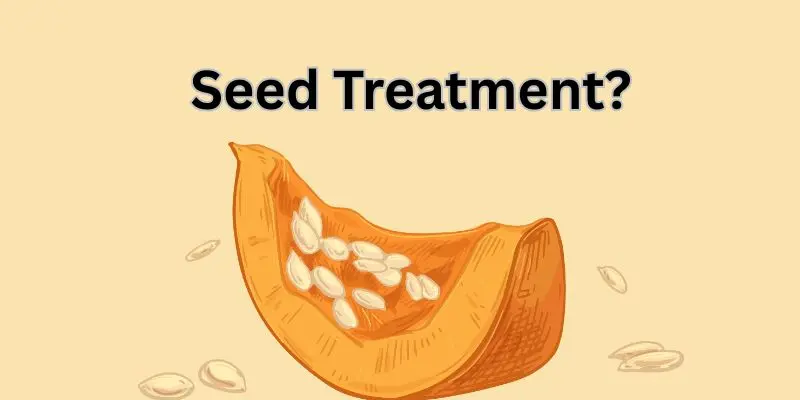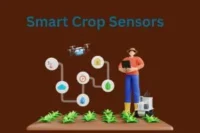Seed Treatment: The Invisible Shield That Protects Your Harvest from the Start
Published: 18 May 2025
Seed Treatment: The Invisible Shield That Protects Your Harvest from the Start — sounds important, right? But what exactly is it? Is it like a pesticide? Or maybe something farmers spray on crops? Do all seeds need it? Honestly, it’s not immediately clear why seeds would need protection before they even touch the soil. Isn’t soil supposed to be the natural starting point? The whole idea sounds a bit technical, maybe even unnecessary—until you realize just how much is at stake before a seed even has the chance to grow.
So, guys, without wasting time, let’s jump into the article to learn Seed Treatment: The Invisible Shield That Protects Your Harvest from the Start
The Heartbeat of a Healthy Harvest
- Crop failure often begins before seeds even sprout.
- Seed treatment is a protective step taken before planting.
- It ensures seeds are safeguarded from disease, pests, and poor soil conditions.
- A small investment in seed treatment can lead to a stronger, more secure harvest.
- In a world of climate unpredictability, it’s more than smart—it’s necessary.
What Is Seed Treatment?
- The application of chemical, biological, or physical agents to seeds before planting.
- Designed to protect seeds from soil-borne threats (fungi, insects, bacteria).
- Improves seedling vigor and germination rates.
- Offers an early advantage in crop health and growth.
- Common in both conventional and sustainable farming systems.

Why Seed Treatment Matters More Than Ever
- Climate change is increasing pest pressures and disease risks.
- Soil degradation reduces natural resistance to threats.
- Farmers face rising costs from crop losses and replanting.
- Seed treatment builds resilience before crops face external stress.
- It’s a proactive, low-cost way to prevent problems rather than fix them later.
Key Benefits of Seed Treatment
- Shields seeds from early-stage diseases and pests.
- Enhances germination and early plant strength.
- Reduces need for chemical sprays after planting.
- Minimizes crop loss and lowers replanting costs.
- Increases uniform crop emergence and yield reliability.
- Supports eco-friendly farming by targeting only the seed, not the whole field.
Types of Seed Treatments
- Chemical Treatments:
- Include fungicides and insecticides.
- Protect seeds from known pathogens and pests.
- Biological Treatments:
- Use beneficial microbes or fungi.
- Boost root health and natural immunity.
- Often used in organic and regenerative agriculture.
- Physical Treatments:
- Involve heat, irradiation, or abrasion.
- Remove pathogens without chemical use.
- Ideal for seed sanitation.
Common Myths About Seed Treatment
- “Seed treatment is only for big farms.”
- False. It’s scalable and useful for small farms too.
- “It harms the environment.”
- Not necessarily. Treated seeds can reduce overall pesticide use.
- “It’s not worth the extra cost.”
- The cost is low compared to the potential savings and yield gain.
- “It affects seed germination negatively.”
- When done properly, it actually improves germination in most cases.
Seed Treatment and Sustainable Farming
- Reduces broad-spectrum pesticide applications later in the season.
- Promotes targeted, efficient use of inputs.
- Encourages healthier soils by preventing excessive chemical buildup.
- Supports climate-smart crop management practices.
- Helps ensure food security in changing environmental conditions.
Real Farmer Stories (Optional Section)
- Example: A mid-sized farmer in Kansas increased corn yield by 12% after adopting seed treatment.
- A small organic farm in Vermont reduced seedling disease by switching to biological seed treatment.
- Stories like these highlight seed treatment as a powerful, adaptable tool for diverse farm types.
FAQs about Internet
Here are some of the most frequently asked questions about the Seed Treatment: The Invisible Shield That Protects Your Harvest from the Start.
Generally, it improves germination and early seedling health.
Yes, many treatments are cost-effective and available in small quantities.
Only if the treatment is approved under organic standards (usually biological or physical).

- Be Respectful
- Stay Relevant
- Stay Positive
- True Feedback
- Encourage Discussion
- Avoid Spamming
- No Fake News
- Don't Copy-Paste
- No Personal Attacks

- Be Respectful
- Stay Relevant
- Stay Positive
- True Feedback
- Encourage Discussion
- Avoid Spamming
- No Fake News
- Don't Copy-Paste
- No Personal Attacks





